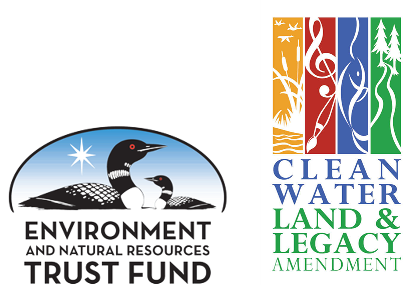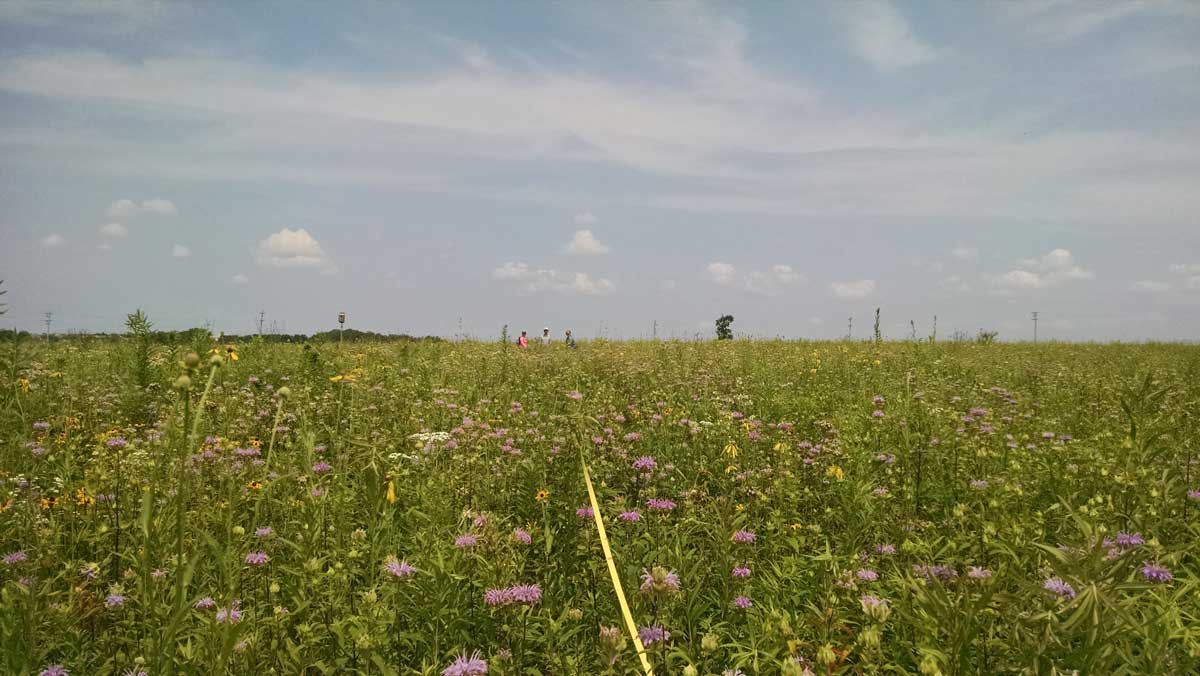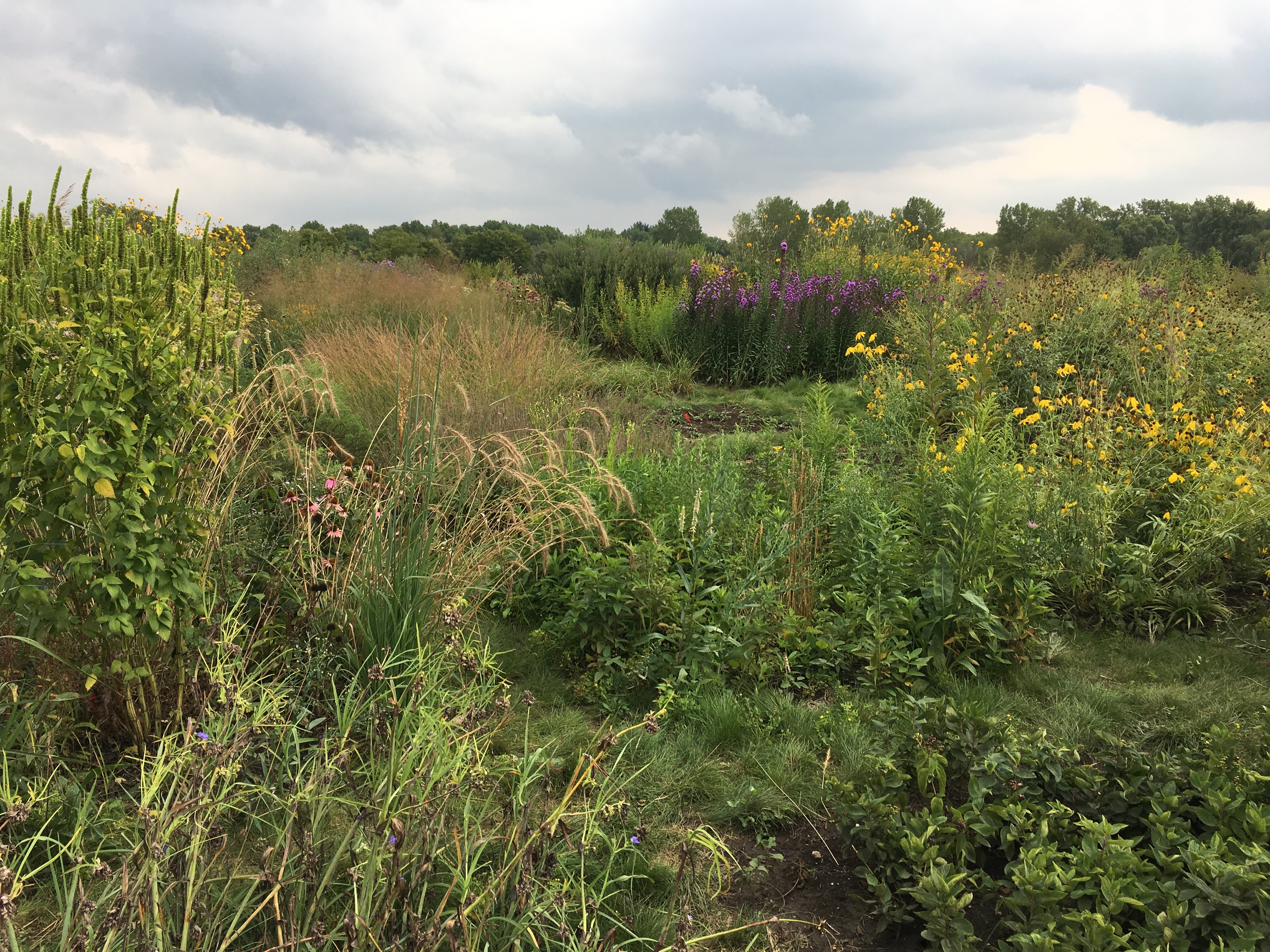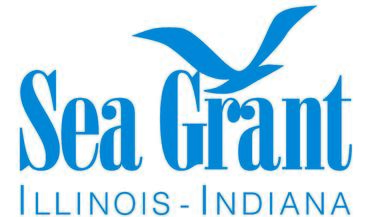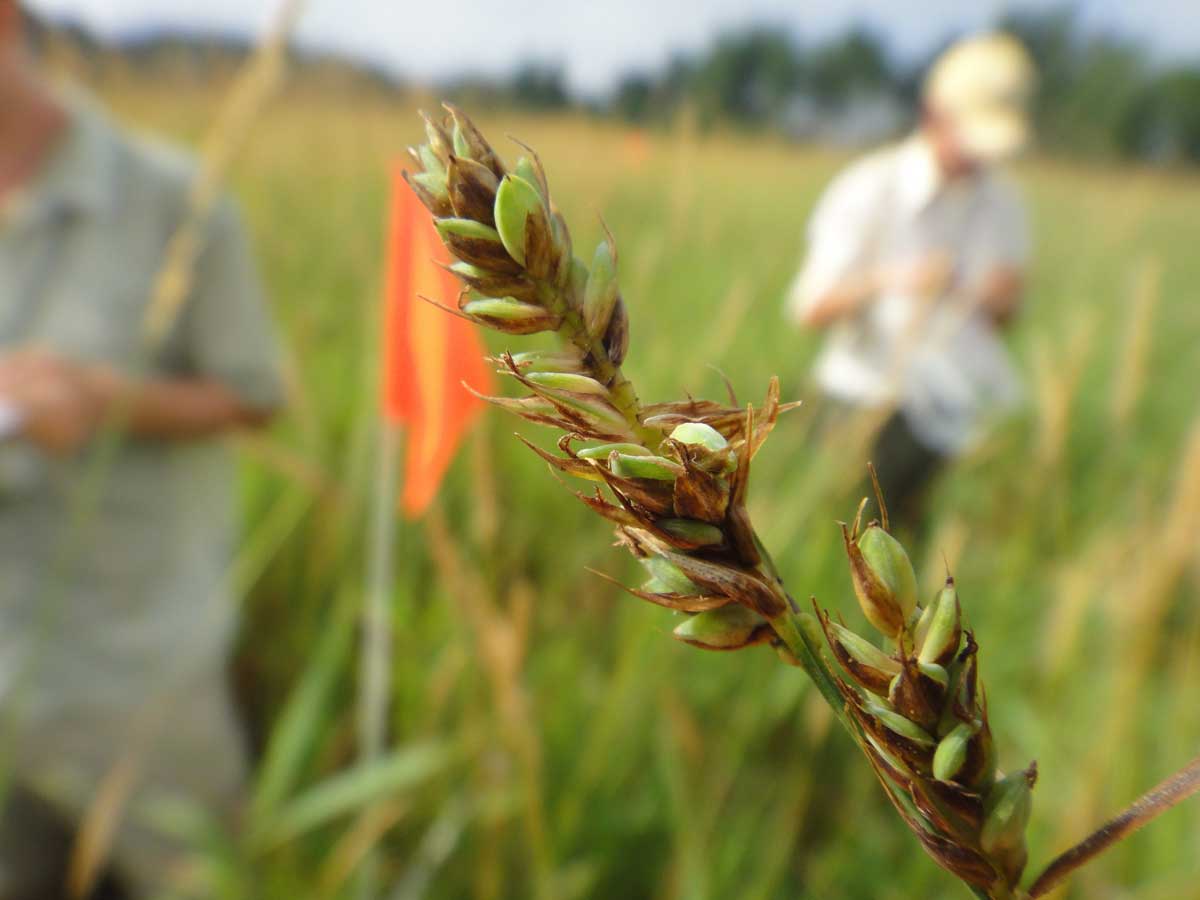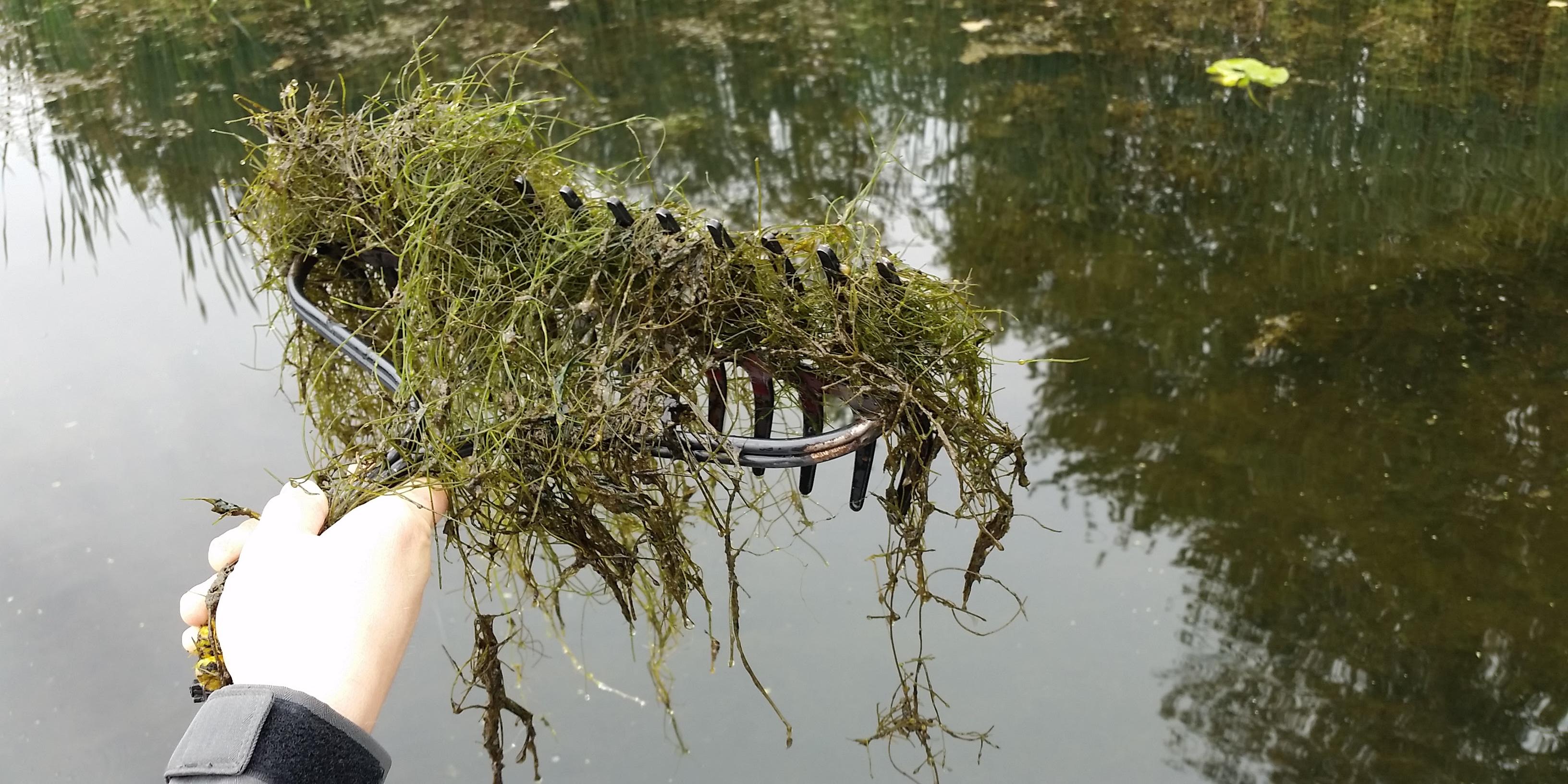
Examples of current and recent research projects
Risk assessment, control, and restoration research on aquatic invasive plant species
There are key gaps in our ability to prevent and control aquatic plant invasions and restore the ecological structure and function of impacted areas. To help address these gaps, this project focuses on priority aquatic invasive plant species in Minnesota. Findings are translated through outreach and extension to agency staff, lake service providers, lake associations, and others. The project will support prevention through assessment of spread risk to predict future invasions, control through laboratory and field investigations of AIS treatments, and restoration through evaluation of non-target herbicide effects and post-control vegetation recovery. Three species are targeted representing different stages of invasion in Minnesota: Potamogeton crispus (curly-leaf pondweed), Myriophyllum spicatum (Eurasian watermilfoil), and Nitellopsis obtusa (starry stonewort). Funding for this project was provided through the Minnesota Aquatic Invasive Species Research Center from the Minnesota Environment and Natural Resources Trust Fund. This project helps support graduate students Mike Verhoeven and Rafael Contreras-Rangel.
Papers: Escobar et al. 2016, Romero-Alvarez et al. 2017, Muthukrishnan et al. 2018a, Glisson et al. 2018, Larkin et al. 2018, Muthukrishnan et al. 2018b, Glisson et al. 2020a, Muthukrishnan and Larkin 2020, Larkin et al. 2020
Phase II: Impacts of invader removal on native vegetation recovery
To evaluate the ability of invasive aquatic plant control efforts to yield recovery of native aquatic plant communities, this project will:
- Perform in-lake invader control experiments using a small-scale in-lake experiment to evaluate how native plants respond to invader removal, seed-addition, light availability, and the combination of these factors
- Analyze monitoring data from hundreds of lake management projects previously conducted in Minnesota over twenty years
- Develop a publicly available statewide plant monitoring and management database
Why? Because each year, lake managers, lake associations, municipalities, and the Minnesota Department of Natural Resources manage Eurasian watermilfoil and curly-leaf pondweed in hundreds of Minnesota lakes, principally through herbicide applications. These control efforts are motivated in part by the expectation that reducing invader abundance will restore native macrophyte communities. This “spray-and-pray” approach hinges on the little-tested assumption that it is competition from invaders that has displaced native species. Because aquatic invasive plant management often yields little recovery of native vegetation, we must revisit this assumption. It is crucial to understand when invader reductions do foster recovery of native plants vs. when other limitations may need to be overcome to restore lost diversity.
Verhoeven et al. 2020a, Verhoeven et al. 2020b
Understanding the benefits and limitations of using goats for invasive plant control
PI: Tiffany Wolf, co-PI: Dan Larkin
Managing invasive plants is expensive and labor-intensive. The high cost of conventional tactics like mowing and herbicide application has led managers to look to less traditional methods of control, including the use of browsing goats. Goat management has surged in popularity, but proof that it works in the long-term is lacking. We are evaluating the effects of goat defoliation on buckthorn management and native plant communities.
Funding provided by the Minnesota Invasive Terrestrial Plants and Pests Center through the Environment and Natural Resources Trust Fund as recommended by the Legislative-Citizen Commission on Minnesota Resources.
Marchetto et al. 2020, Marchetto et al. 2021
Manoomin / Psiη (wild rice) in Minnesota and the Great Lakes region: A flagship for environmental preservation and Indigenous resource sovereignty
An interdisciplinary research project that prioritizes Tribal views on the cultural significance, ecology, and policy of Manoomin / Psiη (Wild Rice).
Funded by: the University of Minnesota – Twin Cities’ Grand Challenges Initiative and Institute on the Environment, National Science Foundation, and USGS Northeast CASC.

Ecology and biology of invasive hybrid watermilfoils in northern tier waterbodies
In collaboration with U.S. Army Corps scientists, we are conducting field and laboratory research on growth, phenology, and competitive ability in the hybrid invasive species Myriophyllum spicatum x sibiricum (hybrid watermilfoil) relative to its parent species, the native M. sibiricum (northern watermilfoil) and non-native M. spicatum (Eurasian watermilfoil). This research is funded by the U.S. Army Corps of Engineers Engineer Research and Development Center.
Collaborative Research: Testing the effects of phylogenetic diversity on restoration outcomes in tallgrass prairie
In collaboration with researchers at Chicago Botanic Garden and The Morton Arboretum, we are investigating how plant community phylogenetic and functional diversity influence restoration outcomes in tallgrass prairie. This research is funded by the National Science Foundation and contributed to Becky Barak's dissertation work (PhD 2017). Award abstract
Papers: Hipp et al. 2015, Larkin et al. 2015, Barak et al. 2016, Larkin et al. 2016, Barak et al. 2017, Barak et al. 2018, Hipp et al. 2018, Williams et al. 2018, Williams et al. 2021
Ecology, genetics, and management of non-native Phragmites australis (common reed)
We conducted research on the comparative ecology and population genetic structure of native vs. non-native Phragmites in the Chicago region and then developed a "crowdsourcing" project to partner with wetland managers throughout the U.S. to investigate Phragmites invasion and control efforts. This research was funded by Illinois-Indiana Sea Grant and helped support Amy Price's thesis work (M.S. 2011).
Papers: Overholt et al. 2014, Price et al. 2014, Fant et al. 2016, Hunt et al. 2017
Relationships between vegetation condition and secretive marsh bird occupancy in natural and restored wetlands
We collaborated with wildlife biologists from the Wisconsin Department of Natural Resources to investigate how plant-community composition, invasive species, and ecological restoration influenced use of wetlands by secretive marsh birds (Virginia Rail, Sora Rail, and American Bittern). This research was funded by the U.S. EPA and formed the basis for Wes Glisson’s thesis (M.S. 2012).
Papers: Glisson et al. 2015
